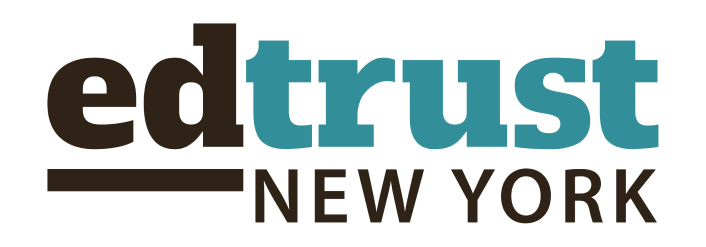AID, ACCESS, AND EQUITY BLOG SERIES: To ensure all students are aware of financial aid options, a Universal FAFSA policy will be implemented this academic year so that New York students, regardless of citizenship status, have support and resources to complete the FAFSA and state aid applications, such as the Tuition Assistance Program and the DREAM Act. Students can sign a waiver to opt out of completing the FAFSA, and districts and schools will be responsible for tracking completion and waivers.
To support this effort, EdTrust-New York hosted discussion groups with students and counselors to inform a five-part blog series on how this policy can help students, best practices for FAFSA completion, and additional supports needed for implementation.
Hectic. Stressful. Out of place.
These are just a few words that high school and college students in New York State used to discuss their strong feelings about the Better FAFSA, which is meant to help students from low-income backgrounds obtain Pell Grants, awards from the New York State Tuition Program and other merit-based aid.
While completing the FAFSA has the potential to remove postsecondary financial barriers for students from low-income backgrounds and first-generation students, the Better FAFSA rollout had the opposite effect. The chaotic rollout created even more barriers to college access.
Among many issues, students from mixed-status immigrant families did not have the opportunity to complete the form for months and had to follow tedious workarounds. Most students also encountered ongoing technical issues throughout the academic year — all of which officials at the U.S. Department of Education vow to fix by pushing back the FAFSA release date in the upcoming academic year to December 1.
Jose is one of many students who faced significant challenges. He began filling out his FAFSA in December — but was not able to fully complete it until mid-May.
“If it were up to me, I would have had it done in December or January,” said Jose. “It’s been purely technical issues — bugs and glitches. There have been weeks where I would contact [the Federal Student Aid] office every day.”
Many other students had issues with the application crashing and verifying their identification or their parents’ identification — instances that caused delays in receiving their financial aid packages — some as late as May 2024.
“Even though schools moved their commitment deposit deadline, I’m still not receiving my financial aid,” said Tanvir, a high school senior. “And I’m like, ‘where do I go? This is my dream school, but if I’m $100,000 in debt a year, then I won’t be able to go.”
The challenges students and families faced are reflected in the overall data on FAFSA completion in New York State for the 2023-24 academic year: the student completion rate dropped 12.6% statewide from last year – and schools with 85% or more students from low-income backgrounds experienced an even greater decrease of 17.4%.
In line with changes to the Better FAFSA, which included a new aid formula, the U.S. Department of Education estimated that an additional 75,000 students in New York would be eligible for the maximum Pell Grant, totaling more than $550 million in awards. The state also recently expanded the TAP award amount and improved eligibility requirements to reach more students. The drop in the FAFSA completion rate statewide, unfortunately, signals that students left behind aid that could ultimately benefit them in pursuing higher education.
Completing the FAFSA should communicate to students from low-income backgrounds and first-generation students that college is within reach. Yet students and counselors worry that the Better FAFSA rollout has further built distrust in systems that already do not serve students and families equitably. The challenges students have faced this year can be a detriment to their morale as they move through the postsecondary system — especially for those who may have been on the fence about attending college.
Moreover, students from the rising senior class of 2025 are aware of the challenges their peers faced and may be preemptively entering their senior year with stress about college prospects and lowered expectations about the financial aid process.
“Not that I’m pessimistic, but a lot of people I know had problems with [the form],” said Robert, a high school student in New York.
As New York State moves to a Universal FAFSA state next academic year, counselors and advocates alike share concerns about implementing a new statewide policy that requires seniors to complete the FAFSA or opt out. There will need to be intentional efforts to rebuild trust about the financial aid process and not roll back the hard work that many school and district staff put into supporting students and families.
The Department of Education also must ensure full functionality of the FAFSA form with its phased roll out and maintain clear and consistent communication with students, families, and administrators throughout the process so that they do not experience the frustrations that Jose, Tanvir, and so many others have encountered this year. Furthermore, education leaders in New York State have the opportunity to put the right resources in place to keep up the pace with financial aid awareness with the implementation of a statewide Universal FAFSA policy.
In our upcoming blog series Aid, Access, and Equity series, we will explore opportunities for Universal FAFSA implementation, including ideas from students and counselors, and what concerns they have about the new statewide Universal FAFSA policy. Sign up here to receive updates on our FAFSA work.

